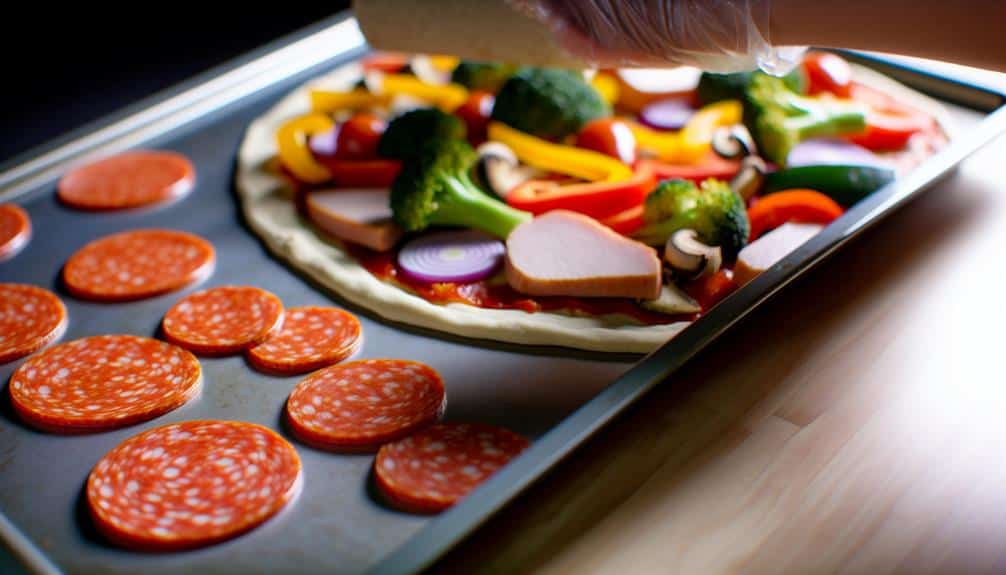Craving a guilt-free pizza slice that's high in protein and
Are you tired of sacrificing taste for health when it comes to pizza?
Imagine a world where you can enjoy a guilt-free slice packed with protein without compromising on flavor.
The secret to achieving the best protein pizza crust lies in the perfect balance of ingredients and techniques.
Stay tuned to uncover the key to creating a protein-packed pizza crust that will have you coming back for more.
Table of Contents
Protein Pizza Crust Recipe
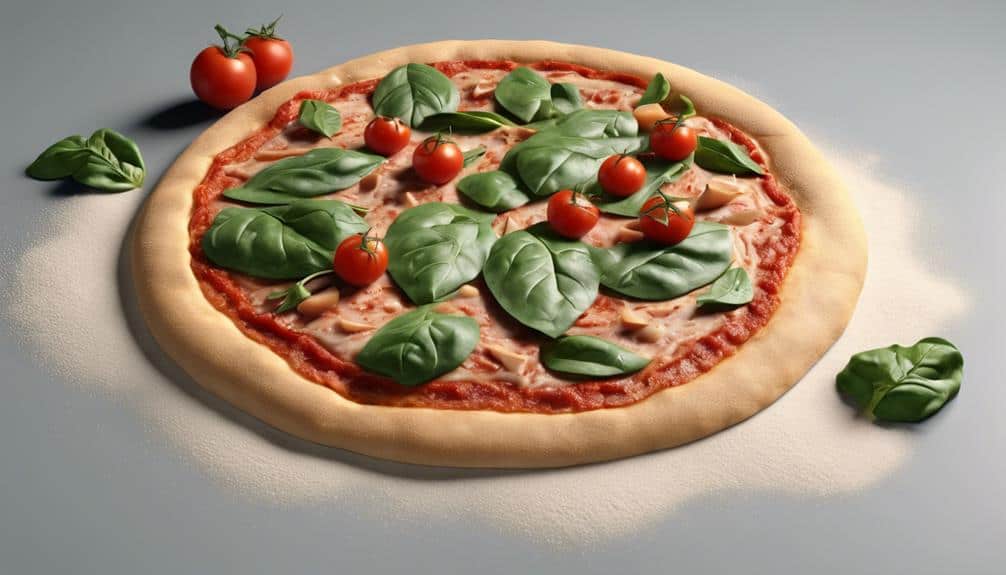
For a protein-packed pizza crust, combine high protein self-rising flour and non-fat Greek yogurt in this simple recipe. This high protein pizza dough comes together quickly without the need for yeast, making it a convenient choice for a delicious meal.
By mixing the flour and yogurt, you create a nutritious base that can support various toppings like lean meats, cheeses, and plant-based options to further boost the protein content of your pizza. The crust bakes up crispy and flavorful, providing a satisfying foundation for your favorite pizza sauce and toppings. Using Non-fat Greek yogurt not only adds protein but also contributes to the dough's texture and taste.
Once your protein pizza is baked, any leftover slices can be easily stored in the fridge or freezer for future enjoyment without compromising quality. This protein pizza crust recipe is ideal for individuals seeking to increase their protein intake while relishing a classic favorite like pizza.
Key Ingredients and Nutrition
To understand the nutritional value of the protein pizza crust and its key ingredients, consider the protein content and benefits of incorporating Greek yogurt and high-protein flour into the recipe. These key components play a crucial role in boosting the protein content of the crust, making it a healthier alternative to traditional pizza dough. Here are three essential points to keep in mind:
- Protein Content: Protein pizza crusts can contain over 15 grams of protein per slice, providing a substantial amount of this essential nutrient to support your body's needs.
- Muscle Repair: The high protein content in the crust, especially when paired with lean meats, cheeses, or plant-based proteins as toppings, can aid in muscle repair and growth, making it an ideal choice for fitness enthusiasts looking to refuel post-workout.
- Customizable Toppings: By choosing toppings wisely, you can further enhance the protein levels of your pizza while catering to your individual preferences and dietary requirements, creating a delicious and nutritious meal.
Step-by-Step Instructions
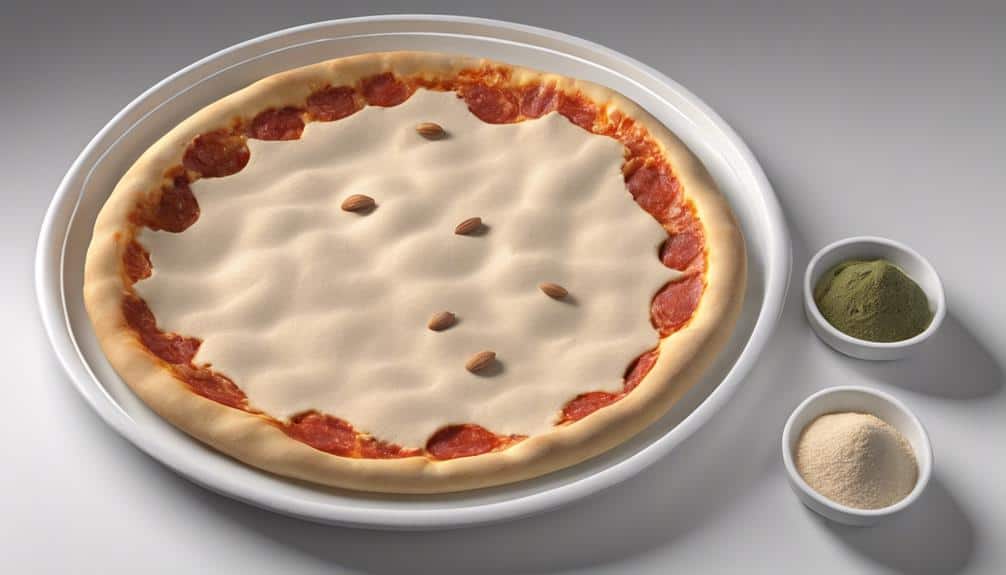
Begin by combining the self-rising flour and Greek yogurt in a mixing bowl. The self-rising flour adds 12 grams of protein per serving, while the Greek yogurt provides over 21 grams of protein per cup, making this protein pizza dough recipe a protein powerhouse. Mix the two ingredients until a dough forms. This quick and easy dough requires no yeast, eliminating the need to wait for it to rise.
Once the protein pizza dough is ready, roll it out into your desired crust shape. Top it with high-protein ingredients such as lean meats, cheeses, and vegetables. These toppings not only enhance the flavor but also boost the protein content of your pizza.
Bake the assembled pizza at 400°F for about 20 minutes until the crust turns a delicious golden brown. The result is a protein-packed base that complements your favorite toppings perfectly. Enjoy a nutritious and satisfying meal with this simple and protein-rich pizza crust recipe.
Ways to Boost Protein Content
Consider incorporating a variety of protein-rich ingredients into both the crust and toppings to maximize the protein content of your protein pizza. Here are three ways to boost the protein content:
- Utilize Greek yogurt and protein flour: Adding Greek yogurt to the crust and using protein flour as a base can significantly increase the protein content of your pizza.
- Include lean meats and low-fat cheeses: Toppings like grilled chicken, turkey pepperoni, and low-fat cheeses such as mozzarella or feta can add a substantial amount of protein to your pizza.
- Experiment with plant-based sources and alternative flours: Incorporating ingredients like tofu, tempeh, cottage cheese, ricotta cheese, or nutritional yeast can provide a plant-based protein boost. Additionally, trying alternative flours like almond flour or chickpea flour can offer unique flavors and higher protein content to your crust.
Storage and Reheating Tips
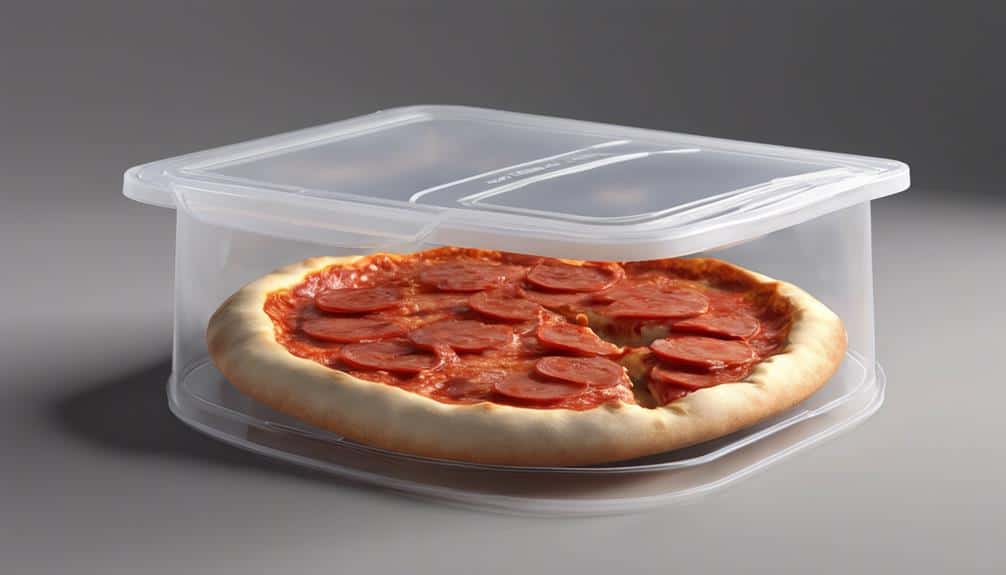
Boost your pizza experience by learning how to properly store and reheat your protein-packed slices for ultimate freshness and flavor retention.
Leftover protein pizza slices can be refrigerated for up to five days, maintaining their quality. For longer storage, freeze them in a ziplock bag for up to six months.
When reheating refrigerated or frozen protein pizza slices, use a microwave for 30-40 seconds or a preheated oven for a fresh taste.
By following these storage and reheating instructions, you can preserve the flavors and texture of the protein pizza crust, ensuring that your meal remains delicious and satisfying.
Properly stored and reheated protein pizza maintains its high protein content per serving, making it a convenient and nutritious option for quick meals.
Enjoy your protein pizza at its best by taking care of your leftovers with these simple tips.
Additional High Protein Recipes
If you're looking to expand your high-protein culinary repertoire, consider exploring a range of delicious recipes that incorporate protein powder for added nutritional benefits. Here are some ways to make the most of high-protein options and boost your meals:
- Protein-Packed Treats: Experiment with making protein bars, muffins, cookies, donuts, and even cookie butter using added protein powder. These treats offer a tasty way to increase your protein intake throughout the day.
- Nutrient-Rich Flour: Substitute regular flour with protein flour, which contains 25-30% more protein. This simple swap can enhance the nutritional value of your dishes while adding a protein boost.
- Market Finds: Explore the variety of high-protein options available in stores, such as Quest pizzas and commercial protein-rich pizzas. Understanding the protein content in these choices can help you make informed decisions when aiming for a balanced meal with lower carbs, like a protein pizza crust.
Expert Protein Pizza Tips
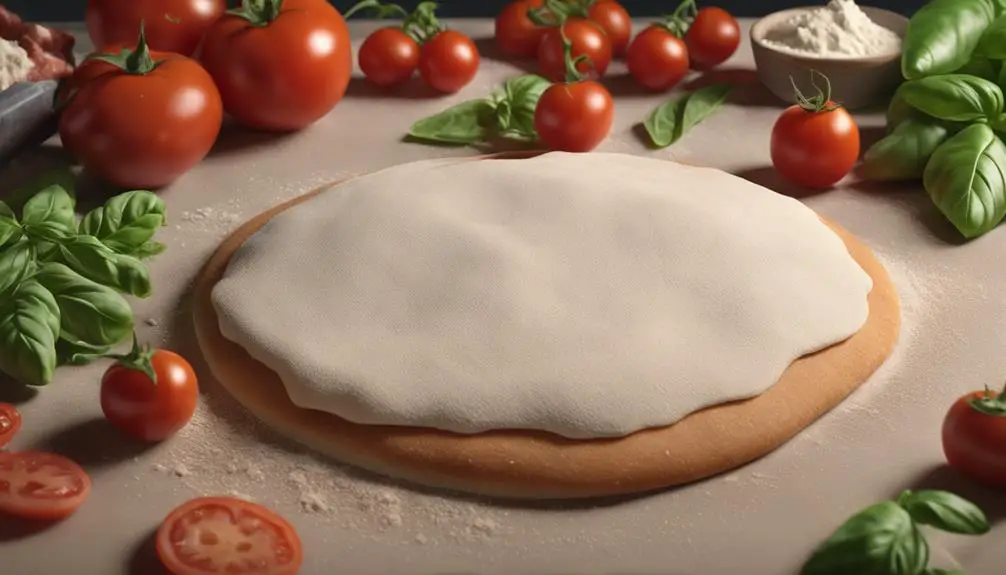
To enhance the flavor and texture of your protein pizza, expert tips can elevate your culinary experience. When making a protein pizza crust, opt for a simple combination of self-rising flour and Greek yogurt. This yeast-free crust offers around 15 grams of protein per slice, ideal for those seeking a high-protein or low-carb option.
Not only is this crust high in protein, but it's also lower in carbs compared to traditional pizza dough, catering to various dietary preferences. The beauty of this protein pizza crust lies in its quick preparation time, perfect for busy weeknights when you crave a delicious meal without the wait.
Frequently Asked Questions
What Is the Best Protein Content for Pizza Dough?
To create a protein-packed pizza crust, aim for at least 15 grams of protein per slice. Use Greek yogurt and high-protein flour for a boost.
Toppings like lean meats, cheeses, or plant-based options can add even more protein. Experiment with ingredients like nutritional yeast, tofu, or tempeh for extra protein.
Understanding and adjusting the protein content of your dough is crucial for a nutritious meal.
How Do You Get More Protein in Pizza?
To get more protein in your pizza, try using high-protein toppings like Greek yogurt or lean meats. Opt for protein-rich flour alternatives such as almond flour for your crust. Experiment with plant-based sources like tofu or tempeh.
Use protein-packed cheese options like low-fat mozzarella. Add protein powder to your dough or use protein-rich sauces like pesto. These choices will boost the protein content of your pizza for a delicious and nutritious meal.
What Type of Pizza Has the Most Protein?
If you're looking for the pizza with the most protein, opt for a high protein crust using protein flour or almond flour.
Toppings like chicken, turkey, lean meats, tofu, tempeh, or legumes can further boost the protein content.
Commercial protein pizzas or homemade versions with protein-rich ingredients offer a higher protein content compared to traditional options.
Maximize your protein intake by customizing your pizza with these nutritious choices.
What Is the Secret to a Good Pizza Crust?
To make a great pizza crust, use the right balance of ingredients like flour and Greek yogurt. Greek yogurt adds protein and moisture, making the crust both nutritious and delicious.
The combo of self-rising flour and Greek yogurt creates a dough that's easy to work with and yields a light, crispy crust. By skipping yeast with self-rising flour, you can quickly whip up a tasty pizza crust.
Customize with toppings while keeping that protein content high!

